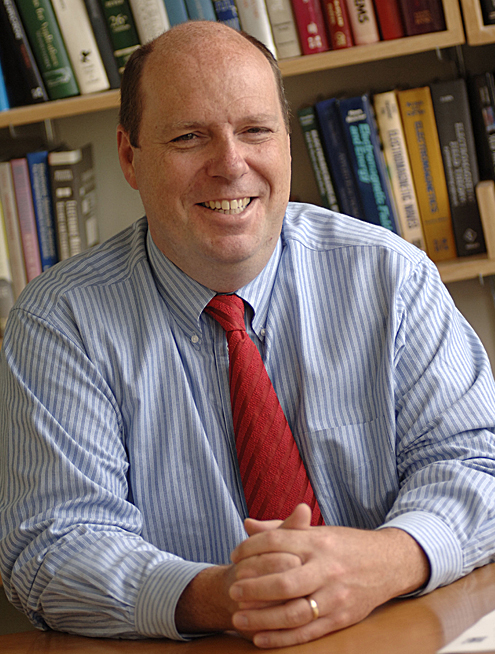Martin A. Schmidt

Martin A. Schmidt received his B.S. degree from the Rensselaer Polytechnic Institute in 1981 and his S.M. and Ph.D. degrees from the Massachusetts Institute of Technology in 1983 and 1988, respectively. He joined the MIT faculty in 1988 in the Electrical Engineering and Computer Science Department. In 2016 he was appointed to the Ray and Maria Stata Professorship of Electrical Engineering and Computer Science. From 1999 to 2006, he served as the director of the Microsystems Technology Laboratories (MTL) at MIT. MTL is an interdepartmental laboratory that provides shared research infrastructure for all of the campus’ activities in micro and nanotechnology and supports the research of approximately 500 students and staff.
In February 2014, he was appointed provost of MIT. Beginning in 2008, he served as associate provost, managing the Institute’s space and the renovation/renewal budgets. Since January 2012, he also assumed responsibilities for “all things industry” as the senior administrative officer responsible for MIT’s industrial interactions. In this capacity, the Technology Licensing Office and Office of Corporate Relations report to him. Beyond his regular responsibilities, he also co-led the Institute’s Task Force on the Budget in response to the 2008 financial crisis. He has played an active role as MIT’s faculty lead in support of the MIT president’s role as co-chair of the Advanced Manufacturing Partnership (AMP), a national effort bringing together the federal government, industry, universities, and other stakeholders to identify and invest in emerging technologies with the potential to create high-quality domestic manufacturing jobs and enhance the global competitiveness of the United States. Lastly, he served as one of the 20 faculty members on the MIT Production in the Innovation Economy (PIE) study, a two-year study focused on understanding the critical linkage of production to the innovation process. The PIE work resulted in two books published by the MIT Press.
His teaching and research is in the areas of micro and nanofabrication of sensors, actuators and electronic devices, microelectromechanical systems (MEMS), design of micromechanical sensors and actuators, and micro/nanofabrication technology. He is the co-author of more than 80 journal publications and 120 peer-reviewed conference proceedings. He is also an inventor on more than 30 issued U.S. patents. More than 25 students have completed their Ph.D. degrees under his supervision.
He is a recipient of the National Science Foundation Presidential Young Investigator Award and has an honorary doctorate from the Technical University of Denmark. He was elected as a fellow of the IEEE in 2004 for contributions to design and fabrication of microelectromechanical systems. He has received the Ruth and Joel Spira Teaching Award and the Eta Kappa Nu Teaching Award at MIT.
In addition to his academic pursuits, he is active in consulting with industry in the commercialization of technology. His research group has transferred a number of new technologies to industry, including new machining methods for pressure sensor manufacturing to two leading automotive suppliers. He was the lead consultant to Input/Output (now ION Geophysical) in the creation of the world’s first MEMS accelerometer to be used in 3D seismic exploration systems. Millions of these sensors have been deployed for oil and gas exploration and are marketed under the VectorSeis trade name by Inova. He has also co-founded or has been the co-inventor of the core technology of six companies that are commercializing MEMS-enabled products. Four of these companies have either had successful exits or are still in operation:
- BioScale, a company that utilizes MEMS resonators for biomolecule detection
- Living Microsystems (renamed Verinata Health and recently sold to Illumina), which focuses on pre-natal diagnostics
- Kateeva, a company that is developing tools for OLED display manufacturing
- Lilliputian Systems, a company that is currently marketing a hand-held mobile device re-charger based on solid-oxide fuel cell technology and microreactors that were invented at MIT.
Married for 27 years and the parents of four sons, he and his wife, Lyn, reside in Reading, Massachusetts.